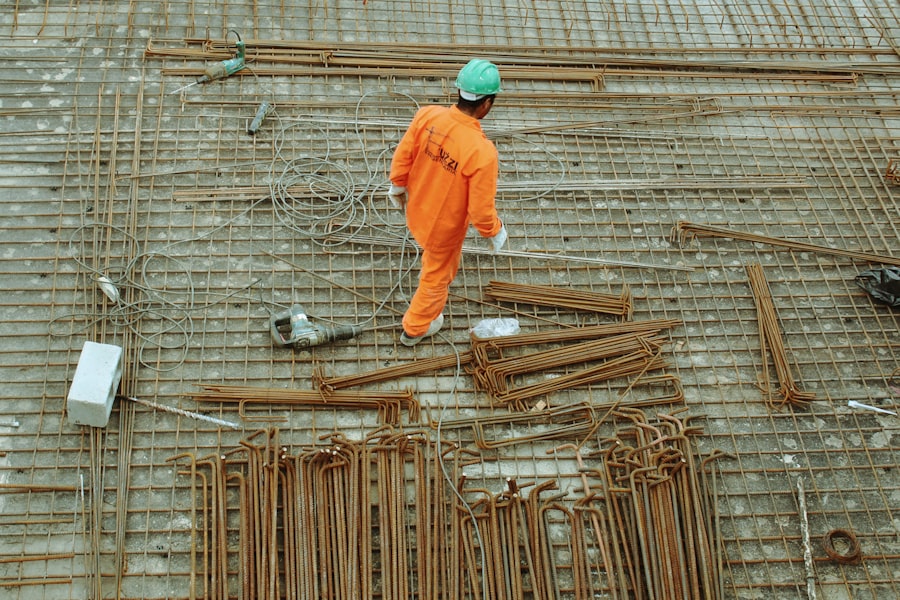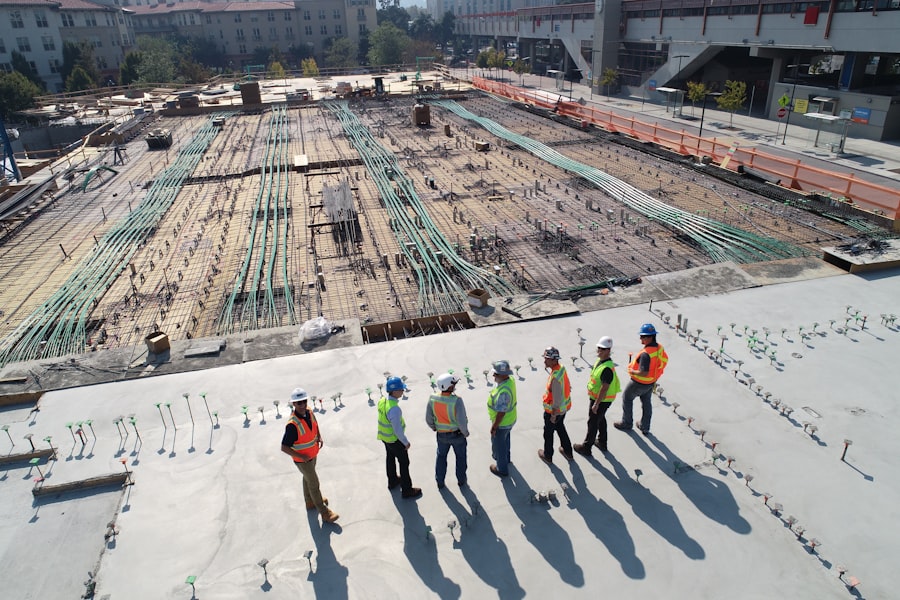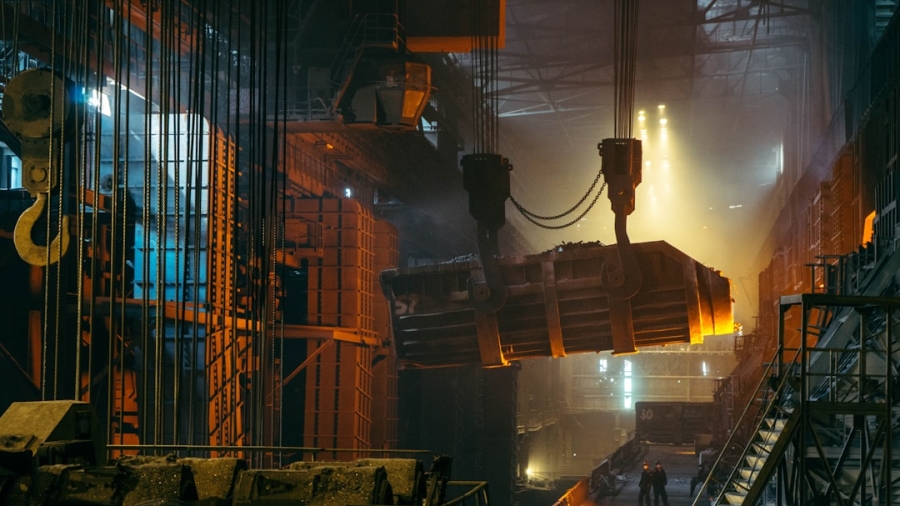The construction industry has long been characterized by its labor-intensive processes and reliance on human skill and expertise. However, the advent of artificial intelligence (AI) has begun to transform this landscape dramatically. AI-powered robots are increasingly being integrated into construction projects, offering innovative solutions that enhance efficiency, precision, and productivity.
These robots leverage advanced algorithms and machine learning capabilities to perform tasks that were once solely the domain of human workers. From bricklaying to site surveying, AI-powered robots are revolutionizing how construction projects are planned, executed, and managed. As the industry grapples with challenges such as labor shortages and rising costs, the adoption of these intelligent machines presents a promising avenue for overcoming traditional barriers.
The integration of AI in construction is not merely a trend; it represents a fundamental shift in how projects are approached. By automating repetitive tasks and providing real-time data analysis, AI-powered robots can significantly reduce the time and resources required to complete a project. This technological evolution is not just about replacing human labor; it is about augmenting human capabilities and enabling workers to focus on more complex and creative aspects of construction.
As we delve deeper into the advantages, types, and implications of AI-powered robots in construction, it becomes clear that these innovations are poised to play a crucial role in shaping the future of the industry.
Key Takeaways
- AI-powered robots are revolutionizing the construction industry by increasing efficiency and safety.
- The use of AI-powered robots in construction leads to improved productivity, cost savings, and reduced labor requirements.
- Different types of AI-powered robots, such as drones, autonomous vehicles, and robotic arms, are being used in construction for various tasks.
- AI-powered robots have a significant impact on safety in construction by reducing the risk of accidents and injuries for workers.
- The integration of AI-powered robots with smart building technology is paving the way for more advanced and interconnected construction processes.
Advantages of Using AI-Powered Robots in Construction
One of the most significant advantages of employing AI-powered robots in construction is their ability to enhance productivity. These robots can operate continuously without the need for breaks, fatigue, or downtime, which allows for a more streamlined workflow. Tasks that would typically take human workers hours or even days can be completed in a fraction of the time by robots equipped with AI technology.
For instance, robotic arms can lay bricks with remarkable speed and accuracy, reducing the overall time required for masonry work. This increased efficiency not only accelerates project timelines but also helps to mitigate the impact of labor shortages that many construction companies face today. In addition to boosting productivity, AI-powered robots contribute to improved quality and precision in construction projects.
With advanced sensors and machine learning algorithms, these robots can analyze their environment and make real-time adjustments to their operations. This capability minimizes errors that can arise from human oversight or fatigue, leading to higher-quality outcomes. For example, drones equipped with AI can conduct site inspections and identify potential issues before they escalate into costly problems.
By ensuring that projects adhere to strict quality standards, AI-powered robots help construction firms maintain their reputations and avoid expensive rework.
Types of AI-Powered Robots Used in Construction

The variety of AI-powered robots utilized in construction is vast, each designed to address specific tasks within the industry. One prominent type is autonomous drones, which are increasingly employed for site surveying and monitoring. These drones can capture high-resolution images and generate detailed 3D maps of construction sites, providing valuable data for project managers and engineers.
By automating the surveying process, drones not only save time but also enhance accuracy, allowing for better planning and resource allocation throughout the project lifecycle. Another notable category of AI-powered robots includes robotic arms and exoskeletons designed for heavy lifting and assembly tasks. Robotic arms can perform repetitive actions such as welding or assembling components with precision that surpasses human capabilities.
Meanwhile, exoskeletons provide workers with additional strength and support, reducing the risk of injury while enabling them to handle heavier materials more efficiently. These innovations not only improve productivity but also enhance worker safety by minimizing physical strain and the likelihood of accidents on site.
Impact of AI-Powered Robots on Safety in Construction
Safety is a paramount concern in the construction industry, where hazardous conditions often pose significant risks to workers. The introduction of AI-powered robots has the potential to transform safety protocols by taking on dangerous tasks that would typically expose human workers to risk. For instance, robots can be deployed in environments with hazardous materials or extreme conditions, effectively removing humans from potentially life-threatening situations.
This shift not only protects workers but also fosters a culture of safety within construction firms, as companies prioritize the well-being of their employees. Moreover, AI-powered robots can enhance safety through real-time monitoring and data analysis. Equipped with advanced sensors and cameras, these machines can detect unsafe conditions or behaviors on site and alert supervisors immediately.
For example, if a worker is not wearing appropriate safety gear or if equipment is being used improperly, the robot can send notifications to prevent accidents before they occur. By integrating AI technology into safety protocols, construction companies can create a more proactive approach to risk management, ultimately leading to fewer accidents and injuries on site.
Integration of AI-Powered Robots with Smart Building Technology
The convergence of AI-powered robots with smart building technology represents a significant advancement in the construction sector. Smart buildings utilize interconnected systems that optimize energy efficiency, security, and occupant comfort through automation and data analytics. By integrating AI-powered robots into these systems, construction firms can enhance their capabilities even further.
For instance, robots can assist in the installation of smart sensors and devices during the construction phase, ensuring that buildings are equipped with cutting-edge technology from the outset. Furthermore, the synergy between AI-powered robots and smart building technology extends beyond construction into ongoing building management. Once a structure is completed, these robots can continue to play a role in monitoring systems such as HVAC (heating, ventilation, and air conditioning) or lighting controls.
By analyzing data from smart sensors, AI-powered robots can optimize energy usage and maintenance schedules, contributing to sustainability goals while reducing operational costs for building owners. This integration not only enhances the functionality of buildings but also positions construction firms as leaders in the growing market for smart infrastructure.
Challenges and Limitations of AI-Powered Robots in Construction

Despite the numerous advantages associated with AI-powered robots in construction, several challenges and limitations must be addressed for widespread adoption. One significant hurdle is the high initial investment required for implementing robotic systems. The cost of purchasing advanced machinery, coupled with the need for specialized training for workers to operate these technologies effectively, can be prohibitive for many construction firms—especially smaller companies with limited budgets.
As a result, there may be a reluctance to invest in these innovations despite their long-term benefits. Additionally, there are concerns regarding job displacement as automation becomes more prevalent in the industry. While AI-powered robots can enhance productivity and safety, they also raise questions about the future role of human workers in construction.
The fear of losing jobs to machines may lead to resistance among employees and unions alike. It is crucial for industry leaders to address these concerns by emphasizing that AI technologies are intended to augment human capabilities rather than replace them entirely. By fostering a collaborative environment where humans and machines work together harmoniously, the construction industry can navigate these challenges while reaping the benefits of technological advancements.
Future Trends and Developments in AI-Powered Robots for Construction
Looking ahead, several trends are likely to shape the future development of AI-powered robots in construction. One promising direction is the continued advancement of machine learning algorithms that enable robots to learn from their experiences on site. As these systems become more sophisticated, they will be able to adapt to changing conditions and improve their performance over time without requiring extensive reprogramming.
This adaptability will enhance their utility across various projects and environments, making them indispensable tools for construction firms. Another trend is the increasing collaboration between robotics manufacturers and construction companies to develop tailored solutions that meet specific industry needs. As firms recognize the potential benefits of integrating AI-powered robots into their workflows, there will be a growing demand for customized solutions that address unique challenges faced by different sectors within construction—be it residential building, commercial development, or infrastructure projects.
This collaborative approach will drive innovation and ensure that robotic technologies evolve in tandem with industry requirements.
The Role of AI-Powered Robots in Shaping the Future of Smart Buildings
In conclusion, AI-powered robots are poised to play a transformative role in shaping the future of smart buildings and the broader construction industry. Their ability to enhance productivity, improve safety standards, and integrate seamlessly with smart building technologies positions them as essential components of modern construction practices. As firms navigate challenges related to labor shortages and rising costs, these intelligent machines offer innovative solutions that can streamline operations while maintaining high-quality standards.
As we move forward into an era defined by technological advancements, it is crucial for stakeholders within the construction industry—ranging from executives to laborers—to embrace these changes positively. By fostering an environment where humans and machines collaborate effectively, we can unlock new levels of efficiency and creativity in construction projects. Ultimately, AI-powered robots will not only redefine how buildings are constructed but also contribute significantly to creating sustainable and intelligent infrastructures that meet the demands of future generations.
While exploring the advancements in AI-powered robots in the construction industry, it’s also insightful to consider how technology is shaping other sectors. A related discussion can be found in an article that delves into the potential of sustainable energy, highlighting how innovation drives efficiency and sustainability across various industries, including construction. For a deeper understanding of how technology is revolutionizing traditional practices, you can read more about this topic here. This article provides a comprehensive look at how embracing new technologies can lead to smarter and more sustainable building practices.
FAQs
What are AI-powered robots in the construction industry?
AI-powered robots in the construction industry are advanced machines equipped with artificial intelligence technology to perform various tasks in construction, such as bricklaying, 3D printing, and site inspection. These robots are designed to improve efficiency, safety, and productivity in the construction process.
How do AI-powered robots benefit the construction industry?
AI-powered robots offer several benefits to the construction industry, including increased productivity, reduced labor costs, improved safety, and the ability to work in hazardous or hard-to-reach areas. These robots can also work around the clock, leading to faster project completion.
What role do AI-powered robots play in the future of smart buildings?
AI-powered robots are expected to play a significant role in the future of smart buildings by contributing to the construction, maintenance, and operation of these advanced structures. These robots can help in the installation of smart building technologies, as well as in the ongoing monitoring and maintenance of building systems.
What are some examples of AI-powered robots used in the construction industry?
Examples of AI-powered robots used in the construction industry include bricklaying robots, autonomous cranes, 3D printing robots, and drones for site surveying and inspection. These robots are equipped with AI and machine learning capabilities to perform their specific tasks efficiently and accurately.
What are the challenges associated with the use of AI-powered robots in construction?
Challenges associated with the use of AI-powered robots in construction include the initial investment cost, the need for specialized training for operators, potential job displacement, and the integration of these robots with existing construction processes and systems. Additionally, there may be regulatory and safety considerations to address.

